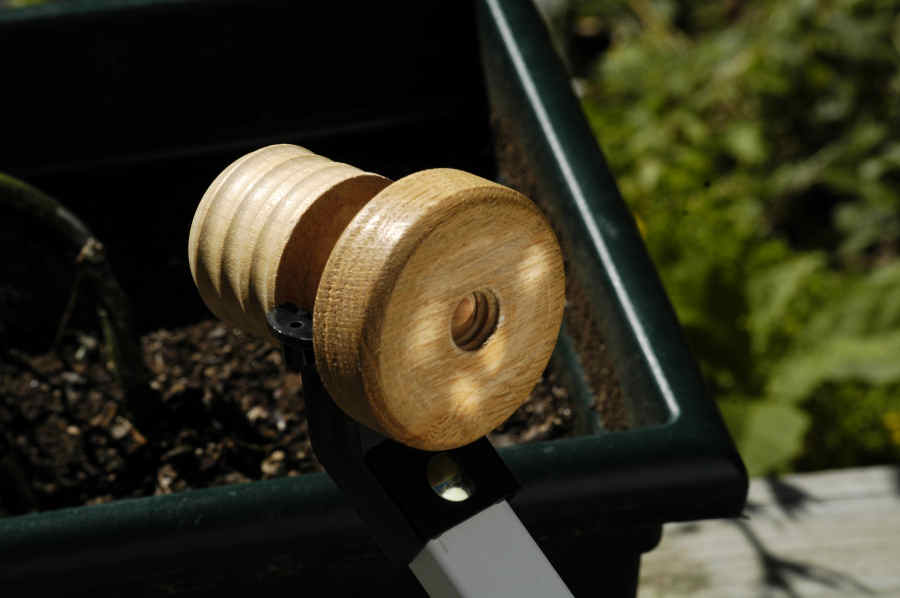You two have a very interesting discussion here. You raise some very fine questions which make me desire to go back into my antenna theory classes from my college days. I now wish I had paid more attention to this subject matter. At the time, it was only a sideline of my main education experience. Now that I am getting involved in this hobby, it would have been valuable for me to research this more way back then.
The idea of a "smeared" out focal point is a bit unorthodox, but I understand the concept. If you think about it as two (or more) dishes blended together, they would actually have more than one focal point. This has to be correct and very well designed with mathematics and physics as we know that they are designing these antennas and they do function.
Obviously, DN, DirecTV, Bell Express and StarChoice are able to design a dish antenna which can get two, three or more satellites to be received on a single dish.
I feel that these satellites are probably using a higher power transmission to make this possible on such small dishes. Most often with the circular polarized signals as that would also benefit this in obvious manners. But, Star choice is doing it with two linear sats for their customers.
I would very much like to research this and develop my math and antenna design skills to understand this better.
Thanks to you two, I have a newfound interest in this subject. It will be a lot of fun simply to research this information.
Thank you guys for inticing me to do more research! A lot of great fun here!
RADAR
Up until a couple years ago, I just assumed that with any paraboloid dish, that signals coming in at different angles (ie from different sats) would just focus at different points. That is, until I set up my first small dish, a Fortec 90CM (up until then, I had only used a BUD). I documented some experiments I did before setting it up, at FC90-sg2100.html. But the part of that process that relates to this thread, is down near the bottom of that page, where I did an experiment by putting several small mirrors on the dish, and aimed the dish at the sun. An example of an image from that is below (sorry for not putting it in thumbprint, but I wanted to wrap text around it)

In the above picture, you can see the spots from 4 different mirrors. I found out later, that the Fortec 90CM's lnbf arm was off by about 2" position wise. Anyway, doing this experiment was really educational for me. No matter what direction you moved off aim, those spots from the mirrors danced around in all directions, not just having the focus move right or left as you aimed right or left of the central aim. Ie if aimed so as to have all the spots at the focal point, then move say to the left a bit, one spot might move up, another right, another left, another down, then as you move further, they all change directions, and do a little dance all over the area. I later put up a bigger screen to observe the dance of the spots. This convinced me that with a regular dish, there was truely only one focal point, and anything off center is a compromise, even though obviously people, including myself, have put lnbfs off center to pick up nearby satellites.
Some day, perhaps at the next solar outage period, I may try that mirror experiment on my 3 sat DirecTV dish, and watch the spots for a couple hours as the sun goes from 101-110-119, just to see if that dish is optimized at those 3 positions, and see how it performs in between these 3 sats. If I do that, I think I'll put a dozen or so mirrors instead of just 5.
Re doing theoretical calculations to show the off axis reflection patterns, that was way beyond my capability, but I did look at how 3 or 4 off axis rays would reflect off a parabola, and it's pretty clear that they don't focus.
Seems like antenna theory using things like mininec or something similar, might show directions where off axis reception might be favorable, but I don't think (I don't really know enough about mininec to know ) that it can really show the pattern of an off axis signal. (I'm not sure I said that clearly.)
{EDIT: ie I think mininec would show the pattern of the antenna, not the pattern of an incoming off axis signal. I think optical theory would be more useful here. End EDIT.}
Anyway, I agree that this is an interesting topic, but for me, using mirrors is the only way I can visualize what's going on.
Last edited:

